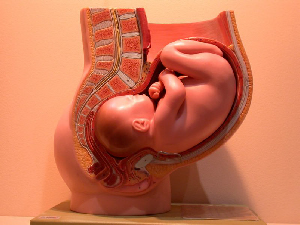 When you are pregnant, you have a great deal of questions. Many of those will be about labor and delivery, especially during the third trimester. You might also be confronted with many new terms and phrases that make no sense. Here’s the answer to one of them: What does it mean when the baby is engaged?
When you are pregnant, you have a great deal of questions. Many of those will be about labor and delivery, especially during the third trimester. You might also be confronted with many new terms and phrases that make no sense. Here’s the answer to one of them: What does it mean when the baby is engaged?
Baby Engaged—What Does It Mean?
If you hear the words “baby’s head engaged”, you might wonder what that means. This means that your baby’s head has engaged in the pelvis. This often happens late in the third trimester, as you are getting ready for birth. You will often notice a baby engaged because you will suddenly be able to breathe easier, and might even be able to eat more without feeling full. That’s because your baby is now down low in your pelvis, pressing toward the entry into the world.
Why Is My Baby Engaged?
There are many ligaments that surround and support your uterus. One of these, called the broad ligament, wraps all around your uterus. During the end of pregnancy, the broad ligament softens and loosens a bit, and that allows your baby to drop lower in your belly. If your baby is facing head-down, as most are at the end of pregnancy, your baby’s head will drop into the new space created by that loosening of the ligament. If your baby is breech, you might feel the engagement when the baby’s hips move lower.
Feeling the baby engaged might not happen for every mother. In fact, in second or third babies, the feeling of dropping might not happen until labor actually begins. Either way, your doctor will be able to tell you if the baby is engaged or not.
Explaining the Technical Points
The terminology for a baby engaged might sound strange. In order to determine the engagement, your doctor will make a note of how many fifths of the head he or she can feel above the edge of the pelvis. So if your baby scores a four or five, it hasn’t dropped yet. If the score is a three, two or one, it means that your baby is engaged in the pelvis. A note of “5 engaged” means that you aren’t even close to engaged yet.
It is also important to remember that the head being engaged or not does not indicate when you will go into labor. Some women have baby engaged for many weeks before labor, while others don’t feel engagement at all until labor begins. That’s because for some women, it takes labor contractions to actually push the baby further down into the pelvis.
When Does Baby Engage?
Remember that every woman is different, and so is her pregnancy. Because of that, it’s tough to state when a baby is engaged. However, first babies tend to drop between 34 and 36 weeks. Sometimes engagement doesn’t happen until labor begins, and then a lot of women won’t notice it as much, because they feel pressure everywhere, not just in the pelvis. The following factors might make a difference as to when your baby engages:
- A baby who is lying with his back against your back might not be able to engage as well. This can make labor tough.
- A baby who has plenty of room to move might not engage early. A baby who is lying in the transverse or oblique position is less likely to engage before labor.
- If your baby is large for gestational age, it might not engage until contractions force it down. This is also true if you are expecting multiple babies.
- Certain maternal factors come into play as well, such as placenta position, the shape of your pelvis, or fibroids in your uterus.
Will You Need a Cesarean?
Many women worry that if baby is not engaged, they will have to have a c-section. Fortunately, most women won’t have to worry about that. Remember that engagement might not happen until the moment labor begins, or even deep into labor. If your baby is too big to deliver vaginally, or if you have a pelvis abnormality that might make delivery difficult, you could need a Cesarean. However, these questions will often be answered well before labor and delivery begin.
What Is Labor Like When the Baby Is Engaged?
With baby partially engaged, contractions are often long and strong, until the baby pushes all the way into the pelvis. When the baby is engaged completely, labor might stall, because the uterus is resting after pushing the infant down to that point. Labor will pick up again soon, and this time it will be more productive, because the baby’s head is pushing down and providing pressure.
Here’s what to do if your baby is breech.

